This site uses only a few technical cookies necessary for its operation. By continuing to browse, you accept their use.
To find out more...
To find out more...
Home-made terrine of foie gras
Preparing your own home-made foie gras from raw is immensively satisfying: good quality liver and a simply amazing flavour – much better than anything you can buy.
This recipe is a bit tricky, but quite within everyone's grasp, as long as you follow the 3 most delicate stages carefully. These are, in order: de-veining the liver, seasoning and cooking.
As usual, I have explained every stage of the recipe in full, with photos to help you.
This recipe is a bit tricky, but quite within everyone's grasp, as long as you follow the 3 most delicate stages carefully. These are, in order: de-veining the liver, seasoning and cooking.
As usual, I have explained every stage of the recipe in full, with photos to help you.
Last modified on: December 16th 2024
For 2 foies gras, you will need:
- 1
 2 raws foie gras (weight about 500 g)
2 raws foie gras (weight about 500 g) - 2
 16.8 ml fine (or table) salt
16.8 ml fine (or table) salt - 3
 4 ml pepper
4 ml pepper - 4
 1 ml "Quatre-épices" spice blend
1 ml "Quatre-épices" spice blend - 5
 10 ml caster sugar
10 ml caster sugar - 6
 10 ml Port
10 ml Port - 7
 10 ml Brandy (Cognac or Armagnac)
10 ml Brandy (Cognac or Armagnac)
Change these quantities to make:
Change measures:
Times for this recipe
Preparation: 4 days 12 hours 40 min.
Resting: 2 hours 35 min.
Cooking: 40 min.
All in all: 4 days 15 hours 50 min.
If you start now, at , you will finish around : ?.Change start time
To finish around 7pm, you'll need to have started before: .Change end time
Step by step recipe
If your liver is already deveined, skip to step 9.
Rinse it thoroughly under warm water to eliminate any remaining traces of blood, then dry it with absorbant paper.
Deveining:
Take the liver out of the fridge at least two hours beforehand, so it will be at room temperature and soft.Rinse it thoroughly under warm water to eliminate any remaining traces of blood, then dry it with absorbant paper.
Pull the veins carefully towards you and remove them, without breaking or cutting, by passing your fingers underneath and following them right to the end.
This is the first tricky stage of the recipe. Your hands will get very greasy (to be expected with a foie gras, you might say), and you should not leave any veins, or as few as possible.
This is the first tricky stage of the recipe. Your hands will get very greasy (to be expected with a foie gras, you might say), and you should not leave any veins, or as few as possible.
You might feel more comfortable working in fine rubber (surgical) gloves.
I recommend using a vegetable peeler as the point does the job quite well.
Another tip: have a bowl or a large cup in front of you and scrape the sticky veins off the blade into this as you work.
I recommend using a vegetable peeler as the point does the job quite well.
Another tip: have a bowl or a large cup in front of you and scrape the sticky veins off the blade into this as you work.
To remove any traces of blood, put the liver in cold water with a tablepoonful of coarse salt and some ice cubes added, for half an hour.
Then rinse the liver under running cold water and dry on absorbant paper.
Then rinse the liver under running cold water and dry on absorbant paper.
Line a wide oven-proof (gratin) dish with cooking-grade plastic film.
This is not essential, it just makes cleaning the dish afterwards much easier.
This is not essential, it just makes cleaning the dish afterwards much easier.
If your liver is already seasoned, skip step 13.
You only need a little, otherwise the flavour of the booze will dominate over that of the liver, which is a shame.
Note: Prefer white alcohols instead of red ones, because red ones turn liver to grey when cooking.
Seasoning:
Start by adding the alcohol. Trickle a few shlurps of Armagnac and Porto over the liver.You only need a little, otherwise the flavour of the booze will dominate over that of the liver, which is a shame.
Note: Prefer white alcohols instead of red ones, because red ones turn liver to grey when cooking.
Weigh and mix the seasonings: salt, pepper, sugar and "quatre épices" spice blend (see below*). Do calculate these quantities carefully and respect the following proportions:7 g salt and 2 g pepper for 600 g liver.
The best way to do this is by using precise scales, but you can also measure them: 1 level teaspoon = 5 g of fine salt or 2.5 g of ground pepper (or near enough).
This is the second tricky stage of the recipe. It is important to use the right quantity of salt for the weight of liver. To help you, here is a little automatic calculator.
The best way to do this is by using precise scales, but you can also measure them: 1 level teaspoon = 5 g of fine salt or 2.5 g of ground pepper (or near enough).
This is the second tricky stage of the recipe. It is important to use the right quantity of salt for the weight of liver. To help you, here is a little automatic calculator.
After weighing the correct amounts, mix the seasonings and scatter the mixture over the liver.
To spread them more evenly, scatter half, then turn the pieces of liver before adding the other half.
To spread them more evenly, scatter half, then turn the pieces of liver before adding the other half.
Cover the seasoned liver in its dish with a plastic film and refrigerate overnight.
Please note: the liver's maturing time in the fridge is important for the flavour. If you don't do this, it will still be good, but not quite as good as if left overnight.
Please note: the liver's maturing time in the fridge is important for the flavour. If you don't do this, it will still be good, but not quite as good as if left overnight.
Next day, the liver is ready to be cooked. Take out of the fridge and remove the plastic film at least 2 hours before cooking.
Cooking
It must be recognized, cooking is THE difficulty of preparing the liver, it must reach a certain temperature at heart, 158°F (70°C) for example, and this temperature must be reached gently, otherwise the liver melts and loses all its fat.I suggest 2 cooking methods, the classic bain-marie terrine cooking, called "De Françoise", and especially cooking called "flat" ":
1) "Flat" cooking
Preheat the oven to 210°F (100°C), preferably without fan - quite unnecessary at such a low temperature.
Stick a thermometer into the thickest part of the liver and put in the oven.
If you'd like to keep the liver "pink", cook until the temperature reaches 122°F (50°C). For "mi-cuit" (just properly cooked, but not overdone), cook until it reaches 149°F (65°C).
If you don't have a thermometer, count 30 minutes cooking for "pink" and 45/50 minutes for "mi-cuit". Unfortunately, these times can only be approximate as your oven and the room temperature will have a marked effect on the cooking. In other words, as soon as you can, buy yourself a thermometer.
Preheat the oven to 210°F (100°C), preferably without fan - quite unnecessary at such a low temperature.
Stick a thermometer into the thickest part of the liver and put in the oven.
If you'd like to keep the liver "pink", cook until the temperature reaches 122°F (50°C). For "mi-cuit" (just properly cooked, but not overdone), cook until it reaches 149°F (65°C).
If you don't have a thermometer, count 30 minutes cooking for "pink" and 45/50 minutes for "mi-cuit". Unfortunately, these times can only be approximate as your oven and the room temperature will have a marked effect on the cooking. In other words, as soon as you can, buy yourself a thermometer.
After cooking, the liver looks unattractive swimming in its fat and cooking juices, but don't worry, this is perfectly normal.
Now it's time to pack the terrine with the pieces of liver.
Use a skimmer to fish the pieces of liver out of the dish, drain them...
Use a skimmer to fish the pieces of liver out of the dish, drain them...
...and transfer to the terrine.
If you intend turning out the terrine later, choose the best-looking and largest pieces first to go in the bottom and finish up with the smaller ones (as in the photo).
If you intend turning out the terrine later, choose the best-looking and largest pieces first to go in the bottom and finish up with the smaller ones (as in the photo).
If, on the other hand, you will be serving the terrine straight from the dish, save the best pieces until last (like in this photo).
This cooking method, inspired by chef Eric Leautey, is very efficient as the centre of the liver gets up to temperature more rapidly when it is in a thin layer. This is the method I use for years.
This cooking method, inspired by chef Eric Leautey, is very efficient as the centre of the liver gets up to temperature more rapidly when it is in a thin layer. This is the method I use for years.
2) "De Françoise"
Preheat the oven to 300°F (150°C).
Roughly reconstitute the liver in the terrine, placing the pieces on top of each other.
Preheat the oven to 300°F (150°C).
Roughly reconstitute the liver in the terrine, placing the pieces on top of each other.
Put the dish in the oven and let the liver cook for 50 minutes uncovered, checking regularly with a thermometer that the water temperature is 158 ° F (70 ° C):
- If the temperature rises too much add half a glass of cold water
- If it goes down too much increase the temperature of the oven a little and pour a little boiling water in the dish (it is good to have a small pot of water on the fire handy throughout cooking).
- If the temperature rises too much add half a glass of cold water
- If it goes down too much increase the temperature of the oven a little and pour a little boiling water in the dish (it is good to have a small pot of water on the fire handy throughout cooking).
At the end of this time, remove the terrine from the oven and pour the liquids contained (fat and cooking juices) into a container, retaining the liver with a skimmer.
Your "De Françoise" terrine cooking is finished.
Your "De Françoise" terrine cooking is finished.
This is not just an attractive finishing touch; once set, it will help the terrine keep better.
The final stage is to compact the terrine a little. I use a block of polystyrene cut to fit the shape of the dish (but a piece of thick cardboard would do just as well), covered with aluminium foil. I place this on top of the contents of the terrine and stand two jars of jam on top. The weight of the full jars is enough to press the terrine.
Leave to cool for 2 hours at room temperature, then refigerate.
Leave to cool for 2 hours at room temperature, then refigerate.
The "press" contraption can be removed after a couple of hours in the fridge.
Your terrine should be left for at least 4 days in the fridge before eating, to give time for the flavour to mature fully.
Your terrine should be left for at least 4 days in the fridge before eating, to give time for the flavour to mature fully.
Note that it's also possible to cook using a 3rd method, "En ballotine", which is both very simple and quite quick. See how to do it with this recipe: foie gras en ballotine
The service
Serve your foie gras either by removing the terrine from the mold (immerse the bottom for a few seconds in hot water to facilitate demoulding) and turning it over on a serving dish to cut slices, as on this photo.Or, without removing it from the mold, by cutting slices in the bowl directly to the taste of the guests.
In all cases, take the bowl out of the fridge 10 minutes before serving , so that it is not too cold during the tasting.
Remarks
If you want a more natural taste, more pure foie gras, you can reduce the alcohol in this recipe to just one tablespoonful (or omit).
Again on the subject of alcohol, there is no need to be strict on the type or their number. Cognac and Armagnac are much the same (for the purposes of this recipe, at least); the same goes for sherry and port, or other fortified wines like Marsala, Maury, Madeira, etc.
For bread which goes best with foie gras, resist the temptation to use sliced industrial bread, or even worse brioche or other rich sweet bread (too soft, too sweet, too similar to foie gras). Better to use a more acidic, rustic bread like a classic "pain de campagne". For me, the best of all will always be a leaven-raised bread.
If you are worried about tackling this recipe, you can start with the easier method in terrine of foie gras.
If, like me, you are a foie gras aficionado but have a problem with the tradition of force-feeding geese, there is a glimmer of hope: check this out.
*In France, a blend of spices is sold as "quatre épices". You can make your own by mixing ground pepper, nutmeg, cloves and cinnamon.
Again on the subject of alcohol, there is no need to be strict on the type or their number. Cognac and Armagnac are much the same (for the purposes of this recipe, at least); the same goes for sherry and port, or other fortified wines like Marsala, Maury, Madeira, etc.
For bread which goes best with foie gras, resist the temptation to use sliced industrial bread, or even worse brioche or other rich sweet bread (too soft, too sweet, too similar to foie gras). Better to use a more acidic, rustic bread like a classic "pain de campagne". For me, the best of all will always be a leaven-raised bread.
If you are worried about tackling this recipe, you can start with the easier method in terrine of foie gras.
If, like me, you are a foie gras aficionado but have a problem with the tradition of force-feeding geese, there is a glimmer of hope: check this out.
*In France, a blend of spices is sold as "quatre épices". You can make your own by mixing ground pepper, nutmeg, cloves and cinnamon.
And to drink?

One can discuss at length what wine to drink with foie gras but, at the risk of being controversial, I don't think a Sauternes goes at all well. Such a sweet wine is already too close to the sweet richness of the foie gras.
I suggest you try a dry white wine instead, which can bring out the flavour of the foie gras by contrasting with it. Why not a "Cotes du Jura blanc" (those from the Domaine Rolet in Arbois (France) are excellent).
If you really prefer a sweet wine, try something less sweet than a Sauternes, like "Coteaux du Layon, Croix blanche" a wine from the Loire valley, (those made by Sylvie Termeau at Rochefort/Loire are perfect).
I suggest you try a dry white wine instead, which can bring out the flavour of the foie gras by contrasting with it. Why not a "Cotes du Jura blanc" (those from the Domaine Rolet in Arbois (France) are excellent).
If you really prefer a sweet wine, try something less sweet than a Sauternes, like "Coteaux du Layon, Croix blanche" a wine from the Loire valley, (those made by Sylvie Termeau at Rochefort/Loire are perfect).
Keeping: Several weeks in the fridge, covered with plastic film.
Source: From Françoise who taught me everything.
Nutritional information
| Proteins (gr) | Carbohydrates (gr) | Fats (gr) | Energy value (in k-calories) | Energy value (in k-joules) | |
|---|---|---|---|---|---|
| Whole recipe | 120 RDI=50 % | 50 RDI=4 % | 450 RDI=70 % | 4,750 RDI=240 % | 19,890 RDI: 240 % |
| Per 100 g | 10 RDI=4 % | 4 RDI=0 % | 40 RDI=7 % | 450 RDI=20 % | 1,900 RDI: 20 % |
| Per foie gras | 60 RDI=20 % | 20 RDI=2 % | 230 RDI=30 % | 2,380 RDI=120 % | 9,950 RDI: 120 % |
How much will it cost?
- For 2 foies gras : 35.55 €
- Per foie gras : 17.80 €
Note: Be careful, these prices are only an estimate, you can consult the table of prices by ingredients used for this estimate.
Some other recipes using this recipeSee them all 9
Paté en croute (terrine in a pie crust)
The French classic "Paté en croute" is a terrine of different meats layered and baked in a pie crust. There are many recipes which vary the kind of meat and the seasonings. This is my version with pork, veal and chicken, which is not too difficult, though it does entail quite a lot of work.
226 K 134.2 6 hours 50 min.
Foie gras Chantilly
Chantilly is a method which is applied to cream of course, but also to other surprising ingredients. If we look at the more scientific side of Chantilly we can see that it's mainly cream, and cream is a mix of very small droplets of milk fat and water, which is called an emulsion. When we whip this...
125 K4.6 30 min.
Purée of Jerusalem artichokes with foie gras
This recipe features a rather unexpected combination that works really well: the distinctive flavour of Jerusalem artichoke with the richness of foie gras. The Jerusalem artichokes are puréed with potatoes. This is serves hot mixed with very cold diced foie gras. The combination of flavours and...
73 K4.1 20 min.
Foie gras fingers
An elegant canapé which consists of a crisp layer of shortcrust pastry topped with a layer of foie gras.
141 K4.6 2 hours 50 min.
Beef Wellington
Beef Wellington consists of a beef fillet (or tenderloin) that is first seared, then cooked in the oven in a puff pastry crust stuffed with a mushroom duxelles and morsels of foie gras. The recipe is rather long, but fairly straightfoward. Here I show you all the tips to help you make it sucessfully...
137 K5 1 hour 40 min.
This recipe uses (among others)

Fine (or table) salt
Like these other recipes: Hasselback or "Swedish-style" potatoes, Tahitian salad, Sweet pastry, Tomatoes Provençal, Souda salad, ... See them all 102

Caster sugar
Like these other recipes: Galette Charentaise, Like Bounty, Italian Meringue, Nantes Tourton, Mouna, ... See them all 361

Port
Like these other recipes: Melon with port sorbet, Terrine of foie gras, Foie gras cured in salt, Lobster Thermidor, Crème de foie gras, ... See them all 9

Brandy (Cognac or Armagnac)
Like these other recipes: Stuffed prunes, Rabbit terrine, Foie gras cured in salt, Paté en croute (terrine in a pie crust), Cocktail sauce, ... See them all 14
Other recipes you may also like
How to succeed in making sabayon (syllabub)
A sabayon is a delicious and delicate preparation based on egg yolks and sugar, with a liquid added (wine, alcohol, fruit juice, etc), which is then whipped in a bain-marie until it is both light and smooth. Usually sabayon is sweet (syllabub), but you can make it savoury, in which case there is only egg yolk, salt, and the chosen liquid, which could be stock, reduced wine, roasting juices, etc... This recipe is for a... November 12th 2017944 K 54 20 min.
Cocotte eggs with Comté
A light delicious and quickly prepared dish, an easy and elegant answer to the frequent question "what are we going to eat this evening?". Here is version with Comté (a famous cheese from eastern France, like gruyère, but much better), but it can be made prepared many different ways. February 21th 2011359 K4.3 1 hour
How to prepare apricots
Here's how to prepare apricots for use in a recipe, from washing to slicing. July 12th 2023745 K3.7 35 min.
Chocolate tart
As you can see, there's very little added sugar in this recipe, so it's a very chocolatey and bitter-sweet tart. November 16th 2013300 K 15 2 hours 30 min.
Exotic fruit tart
An exotic fruit tart (bananas, kiwi and pineapple), with crisp pastry and almond cream which are cooked beforehand. It's a rather simple recipe, but the final result will impress your guests. May 27th 2020329 K5 2 hours 25 min.
News list of cooking-ez.com
Sign up to receive the latest recipes (next batch due to be sent on 2025-09-07)
Note: We'll never share your e-mail address with anyone else.
Follow this recipe (as 61 people already do)
If you are interested in this recipe, you can "follow" it, by entering your email address here. You will then receive a notification immediately each time the recipe is modified or a new comment is added. Please note that you will need to confirm this following.
Note: We'll never share your e-mail address with anyone else.
Alternatively: you can subscribe to the mailing list of cooling-ez.com , you will receive a e-mail for each new recipe published on the site.

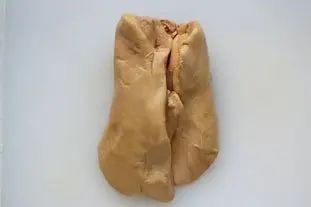
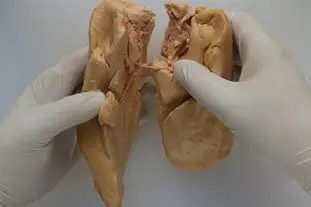
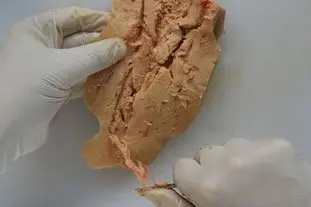

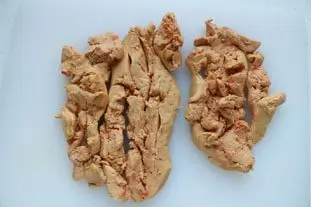

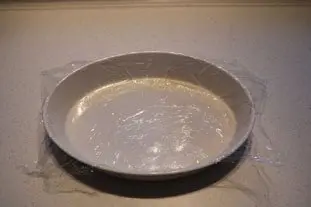
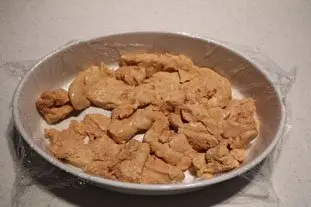
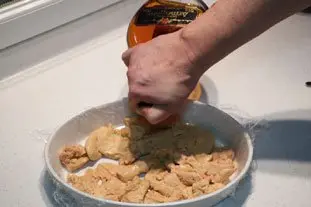
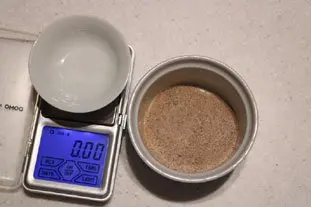
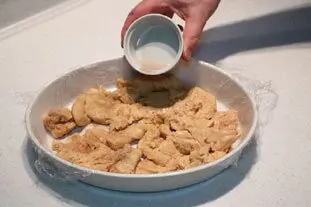
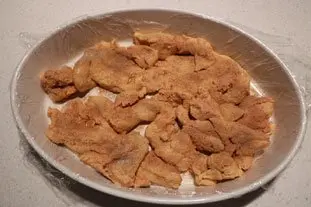
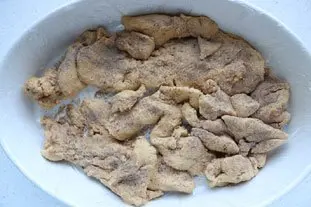


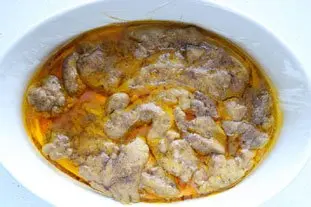

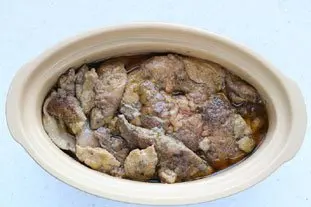
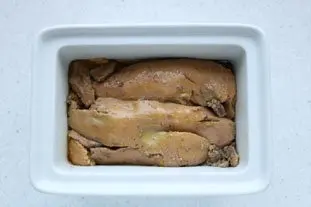
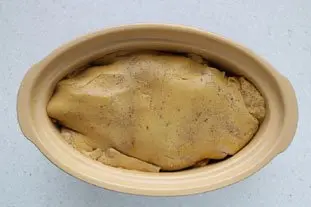
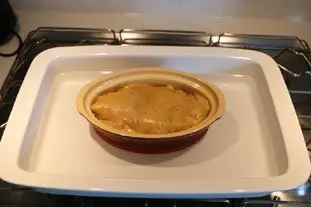
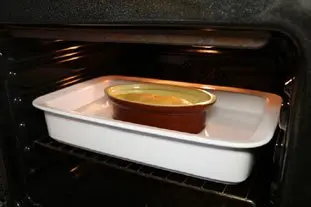


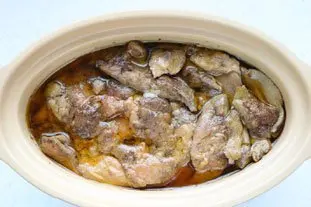
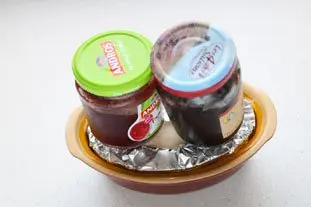

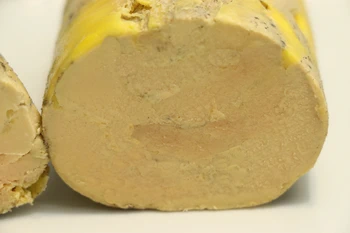




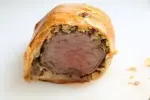


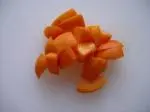


The 6 comments already posted on this recipe
Instead use a smaller container, a jar for example.